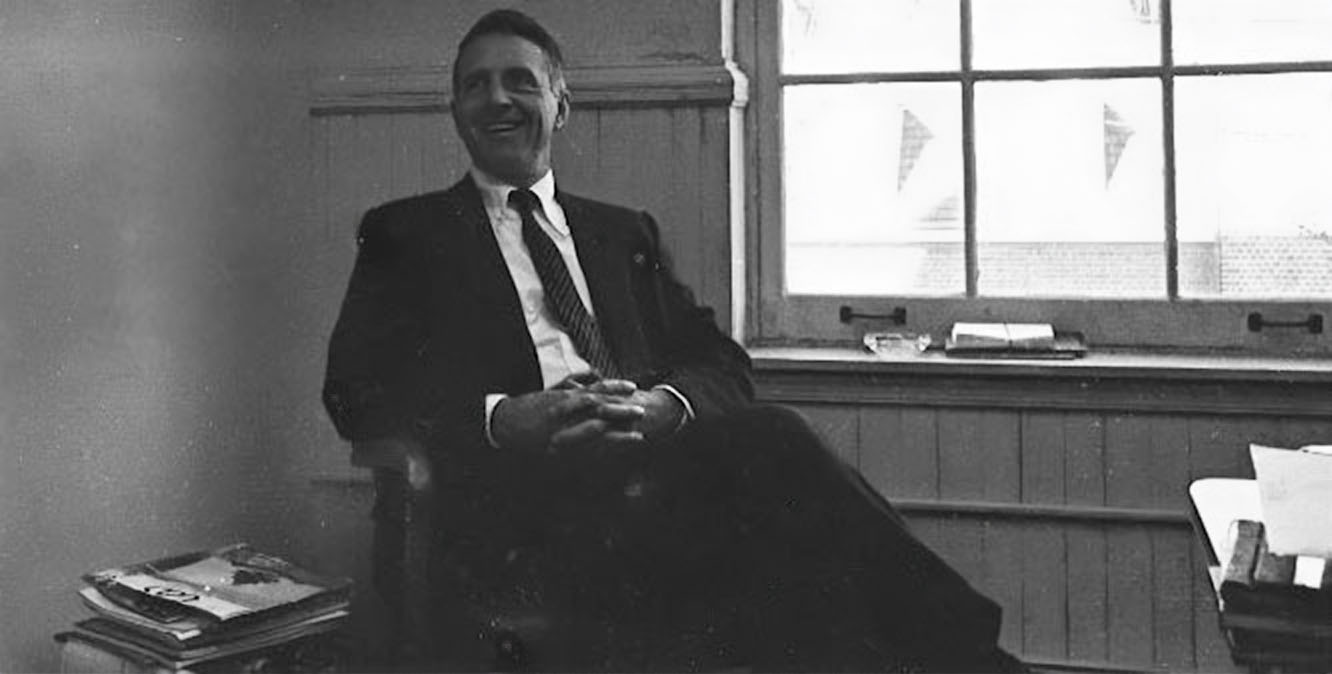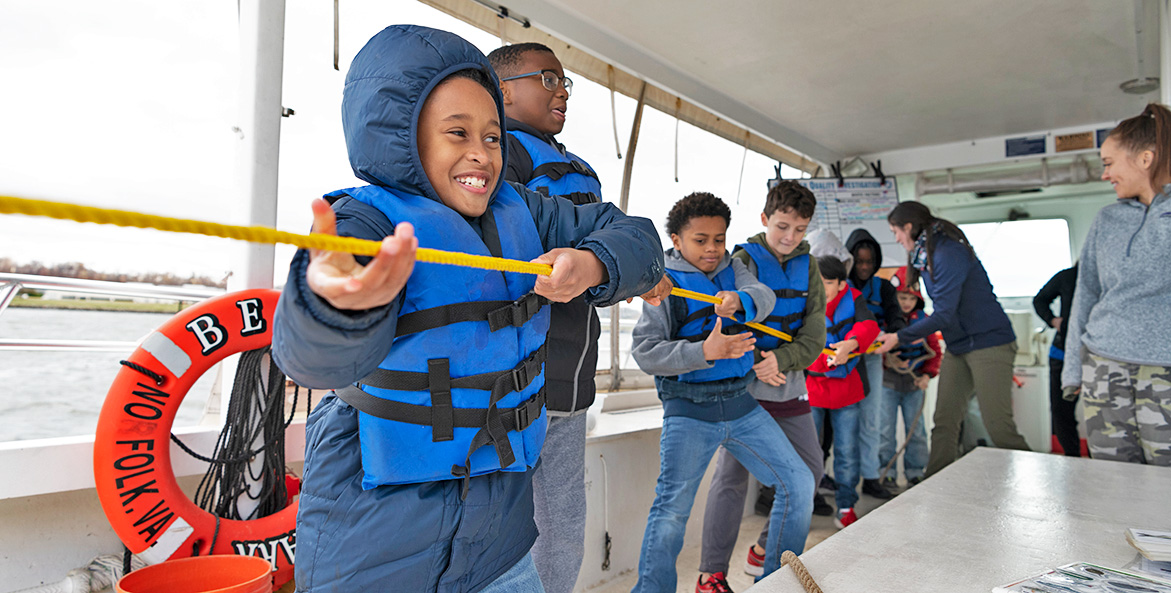Arthur Sherwood, CBF’s first president, was adamant about the power of getting kids “out on the water messing around in boats.” The best way to get young people to care for the Bay, he argued, was to first make them care about it. And to care about it, they first needed to experience it.
That simple idea has remained at the core of CBF’s award-winning Education programs for half a century. As we celebrate our 50th anniversary this year, more than 1.5 million people have learned with us to date. I was one of them—in high school, I traveled to Smith Island, Maryland, on a biology field trip with CBF. The experience inspired me to study environmental science, become a teacher, and ultimately spend almost 20 years back at CBF helping students innovate ways to create a healthier environment.

Arthur Sherwood, CBF's first president, believed, "The place to teach people about the Bay is on it and in it." He put that vision into action in 1973 with the acquisition of a 44-foot workboat and the environmental education center on Meredith Creek near Annapolis that now bears his name.
CBF Staff
What Arthur Sherwood intuited and what I myself have experienced, is that restoring the Chesapeake Bay requires a shift in the way we see ourselves in relation to each other and the world around us. The problems we’ve created over four centuries of development and industrialization will not be solved overnight. Ours is a generational task. To create a lasting culture of environmental stewardship and solve the complex challenges facing our society—whether it be water pollution, climate change, or global pandemics—it takes a deep understanding of how we are all interconnected.
To create a lasting culture of environmental stewardship and solve the complex challenges facing our society—whether it be water pollution, climate change, or global pandemics—it takes a deep understanding of how we are all interconnected.
Immersive, experiential education is one of our greatest tools to achieve this understanding. I grew up in the watershed and was fortunate to have opportunities to swim with my brothers, fish with my dad, and go crabbing with my cousins. But before I went on that biology field trip with CBF, the Bay was simply a vacation spot. On Smith Island, I met a community of people who rely on the health of the Bay to put food on the table and make a living, and how they are deeply interwoven with the rich community of living things that depend on clean water for their existence.
These ‘aha’ moments are like opening a door. It’s not just cerebral, it’s a physical feeling. When you’re in the stream, you see the mayfly and the fish and feel the water that connects them. You see both the minutiae and the magnificence of the system at once.

CBF students are active learners, hauling fishing gear aboard the Bea Hayman Clark education workboat to sort and study what lives in the tributaries of the Chesapeake Bay watershed.
Jay Fleming
Fortunately, environmental education is within the reach of more students in the watershed than ever. Decades of advocacy for outdoor learning and the ground-truthing of its benefits by CBF and many other environmental education partners have led to major structural change in education policies. Learning about the Chesapeake Bay and the local environment is now included in state education standards in Maryland, Pennsylvania, Virginia, and the District of Columbia. In 2011, Maryland became the first state in the nation to make environmental literacy a graduation requirement for all high school students.
Still, with more than 2.8 million students in the watershed, we have a big mountain to climb. We continue to work with an incredible cast of educators, administrators, and partners across the watershed to overcome systemic barriers to high-quality outdoor learning and environmental literacy.
Today CBF Education consists of 14 field programs—mobile canoe programs, floating classrooms, and remote island campuses—that span the watershed states of Maryland, Pennsylvania, Virginia, and the District of Columbia. In addition, our professional development programs help connect teachers with the tools, resources, and support they need to bring outdoor learning and hands-on investigations to their classes. We also work with whole school systems and networks of partners to create the institutional frameworks and community connections that help ensure every student gets these opportunities.
These experiences are far more than field trips. There is a crisis of joy in the classroom—teachers burned out by too many demands and too few resources to meet them, and kids burned out by an overreliance on screen time and the isolation of pandemic learning. And there is a crisis of disinformation beyond the classroom, which continues to derail efforts to address imminent challenges like climate change. Outdoor learning is a natural antidote. When students get outside, they’re not just experiencing the joy of this incredible resource at our doorstep. They’re gaining the tools for creative thinking and problem solving, discovering how they fit into this extremely complex natural and social system, and how they might change it for the better.



